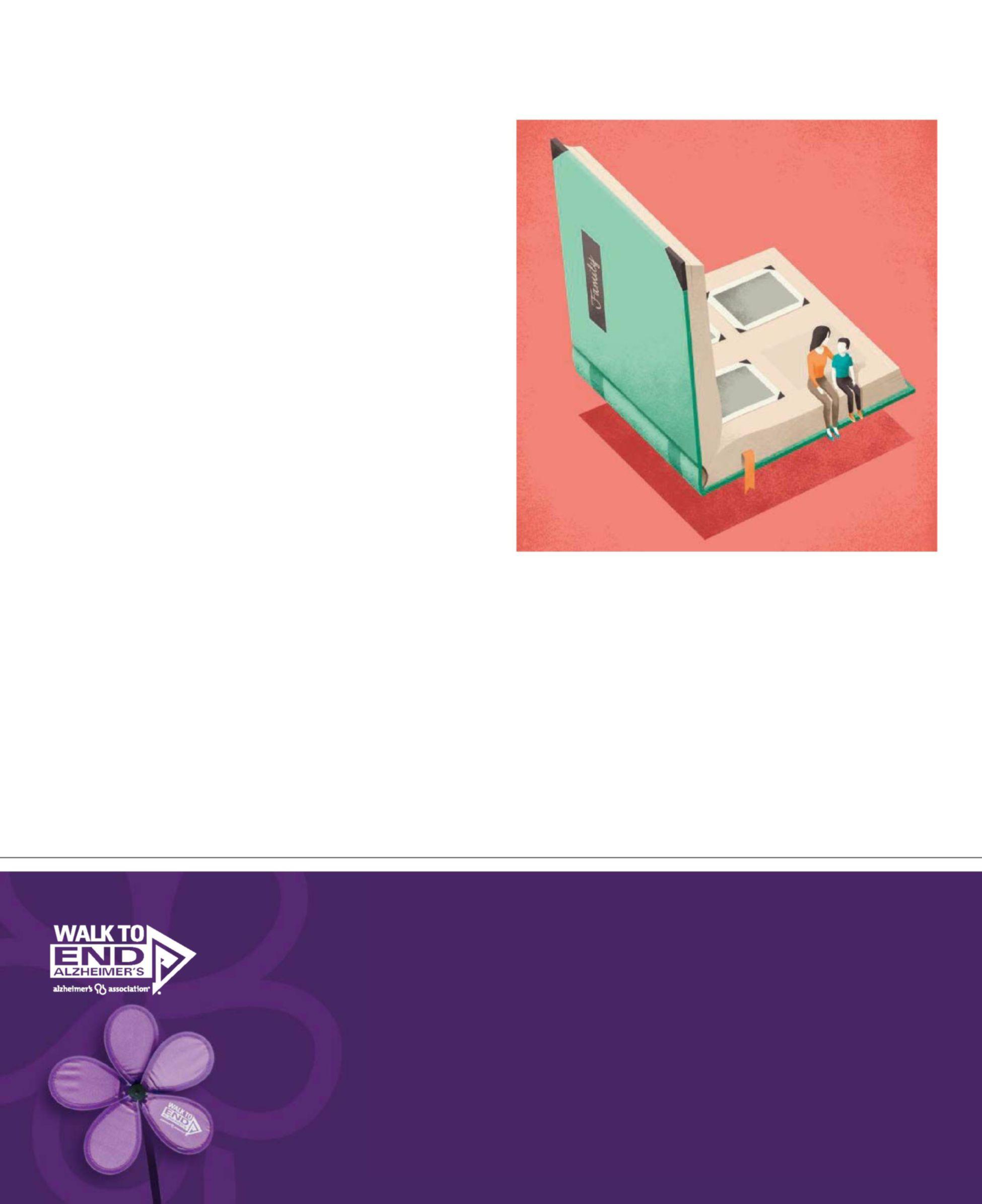
18 minute read
HEALTH
health hea lth
What it is
Advertisement
Sit b kb d lback, but don’t relax. Abb As babies, we master r th he squat bf ebefore we l learn to stand d or walk;lk; as dladults, we m t ust rd rediscover our squ tat p potential l. Th his primal l m moveme t nt ttpattern i a s a b f ,base for many activities, lk like tak king a seat and d lf lifting h heavy ob bjects. . “Th he squat will ll gi e ve y you h the streng hth to lf lift correctl b ly by using g y l bd dyour lower body instead of of your b back k,” says s L Lis ha Wheel ler, th he vice e p presid dent ffi of fitness prog gramming at Dail lyBurn. . c com. “It’s al lso one of f th he most tim ffe-effec etive m moves f for sh haping your r e entire l lower bd bod ,y, e especi llally your b back ksid de.” Since it engages s all ll th he major muscl le g groups ofh l f the lower b bod dy t at once, you can s tquat y your way to b being a a b better runner, ten s nis pl player, or d danc .er. ( (But no guarantees f if y you have two left feet.) )
W Written by y
K Kimberly Dawn Neumann
Photog graph by
Henry Leutwyl r er
5-MI U NUTE TRAIN R ER
3
How to do it
START T with h you f tr feet l a littl le d wider h than h hip-widh dth apart s, toes s straigh ht hah d.ead. KEEP KEEP your ch hest lf lifted d and d your h hand ds cl lasped d i f in front of f you. . DRIVEDRIVE your h hip bs back,k, b bend ding at th he k knees and d ankl kles a dnd pressi ing your k knees sl h lightly ly openas open, as o you… … S SIT t into a s tquat posit tion, g going as d deep as you n can wh whil le still ll k keeping your h heel ls dand toes on the he g ground d, ch hest up, d and sh sho ldulders b back.k. S STRIVE to b break k parall llel l e eventually ( (meaning y your l legs will ll b be b bent sl sli hlghtly more th han a 90d degree ang ).le). P PRESS SS into your f tfeet ad and strai h ghten your l legs s t h d gto return to the standing u upri h ght position. . R REP A EAT 0 10 to 20 20 times. . C Compl lete hthree set , s, th three times k.a week.
1
T
4
BODY CHECK
ecu e eExecute the move as i y uf you g g owere going to s ac a sit in a chair p placed behind d y you. This will help p ensure th tat you are driving g y p .your hips back. 1 Go as deep Go as deep a y s you can comy y ufortably. If you ,have knee issues, g rdon’t go deeper g ethan a 90-degree a g ngle, with g -your thighs parae o allel to e the floo oo .r. 2 Keepyour Keepyour h g eels “glued” to the floor as y you u sq quat, and think a g bout driving t e o e hem into the g ground as you u g r straighten your l g oegs to return to the starting g
Advance t it
g bl ldTry a goblet squat. Hold dd b-a10-to 15-pound dumbb bell ll vert llically wi hbth both h h dl hl dhands lightly pressed t t ,against your sternum, m maintaining hcontact with y h llyour sternum. This will hl b lhelp counterbalance your w h d ll f aweight and allow for a d f .deeper range of motion.
Muscles trained
QUADRICEPS, , HAMSTRING , S, G GLUTEA S LS
p position. (This will p put even more e p mph s asis g on your glutes.) ) 3 Keepyour Keepyour eesknees in line e with y your toes. Als , o, don’t let t y eyour knees cave essin. Press them em youtward so they s g tay aligned d with y your feet s as y you q squat down. 4 DoallowDo allow y you or torso to tilt naturally y y q . as you squat. ( (Justdon’t t collap pse y ryour c es o ouchest or rou d nd y your shoulders y eforward.) If you’re y too erect, your p hip t s cannot release p p properly y and y you’ll p t put oo uc s a too much strain on y your knees. .
TIP
Having trouble g emastering the q dsquat? It could be a a ebe an ankleymobility issue. gTry putting a o dedfolded o eltowel u de eac ee . under each heel.
2
Spicy shredded beef, black beans and colorful veggies. Gluten-free and flavor-full. Spicy Beef & Bean Enchilada. Feed Your Phenomenal.™


GRABTHE TISSUES
Talking to your child about a loved one with a serious illness—whether it’s a grandparent, a friend, or even you—feels impossible. This story won’t make that easy, but it will help you feel prepared. Here’s how to handle the conversation (and all those follow-up questions) with care.
Written by Sharlene Breakey Illustrations by Andrea De Santis

family GRANDPA HAD A STROKE. Your sister needs surgery. Mommy has breast cancer. Ugh. When someone you love gets a bad diagnosis, the news is hard enough on adults. Butbreaking it to your kids? Where doyoueven begin? Besides the basics(when,where, how to start the conversation), there are the larger, loomingconcerns:How much is too much—or too little—to share? What if it affects my teen’s schoolwork? Willmysix-year-oldhave bad dreams? Won’t the worry be toomuchfor their sweet little hearts? It’s enough to make anyone think, Maybe I should just keep the news tomyself. Here’s the thing about that, though: You can’t.
“Kids know when something’s up. They overhear things or see you whispering and fill in the blanks,” says Robin Goodman, Ph.D., a psychologist and the executive director of A Caring Hand, a nonprofit in New York City that helps children and families deal with loss. “And the scary things they come up with are usually far worse than the truth.” It’s much better to teach kids strategies for how to manage the situation, building resilience now and forthe future. “Families that talk openly can shape kids’ attitudes and can forge a path together,” says Goodman. Consider the alternative: how terrifying that path is for kids left to wander it alone. (Hint: You’re not the only one surfing the Web.) “Today children are so young when they turn to the Internet for answers, and there is so much unreliable information,” says Paula Rauch, M.D., the director of Massachusetts General Hospital’s Parenting at a ChallengingTime Program and a coauthor of Raising an Emotionally Healthy Child When a Parent Is Sick. “They don’t know what to make of it. Worse, you’ll probably never know what they’ve learned.” You want to deal with serious illness as afamily unit. This is howto start.
GROUND RULES
Every situation is unique, but some overall guidelines apply to them all.
Deal with your own emotions first. Talk things through with another adult—a good friend, a spouse, a therapist. “It’s like putting the oxygen mask on yourself first,” says Betsy Brown Braun, a child-development and behavior specialist and the author of Just Tell Me What to Say. “Kids soak up your anxiety.” Pick your time carefully. You want minimal distractions. Talk in the car or on a family hike, offering time for them to mull over the information and ask questions. A weekend or after school is probably best. Refer to the disease by its proper name. “That is the beginning of everything,” says Rauch. “It makes it ‘talkabout-able’ and concrete.” You want to send the message that hard things can be discussed, not minimized. Be honest—within reason. “You don’t have to answer their questions with the total truth,” says Goodman. “Approach it like anything else. Tailor explanations to what is appropriate for the child’s age and your situation.” This may mean skipping the specifics of chemotherapy side effects or what, exactly, is being removed during the surgery. Prepare for the Question of All Questions. Are you/is he…going to die? “There is no one right answer, but I can tell you a wrong one,” says Brown Braun. “Don’t say no unless you are 100 percent sure that’s true. Instead, tell them what you can in as reassuring a manner as possible: ‘Right now I have the best doctors, and we are doing everything possible to make my body well again. I’m planning to have many more years with you.’ ” Talk logistics. Kids at every age are egocentric, says Goodman, so relate what you share to their everyday life. “I will need to get a blood test every Wednesday to ensure the medicine is working, so Aunt Jenny will get you to band practice on those days.”
LIVINGWITH ALZHEIMER’S.
Take it one conversation at a time. Ifitseems like a lot, it is. But you don’t have to accomplish everything at once.
WHAT TODO WHEN THE SICK LOVED ONE IS…
A BELOVED ELDERLY RELATIVE
Declining health of grandparents (or great-aunts and great-uncles) can be painful, but it may also be the easiest situation for young minds to grasp, says Goodman. “Even young children often learn that older bodies don’t work as well forever,” she says.
HOWTO BRING ITUP: Chances are the kids have an idea that something is up, so don’t dawdle. “A grandfather with a serious heart problem may not have the same engagement, causing kids to make assumptions, like ‘He doesn’t love me as much anymore,’ ” says Wendy Mogel, Ph.D., the author of The Blessing of a Skinned Knee. Acknowledging the change is your way in. “Say, ‘I know it’s hard that Grandpa hasn’t been coming to your baseball games lately. Here’s why,’ ” suggests Goodman. Remember that a wondrous tone can help little kids grasp the enormity. Says Mogel: “Tell them something like ‘The heart has to pump 70 times a minute to circulate blood, and Grandpa has been doing thatfor more than 80 years. How amazing isthat? But now his heart is having a harder time.’ ”

HOWTO HELP THEM
COPE: Give your kids a sense of agency, not helplessness, by treating them like health-care advocates, whether they’re 4 or 14, says Mogel. Say, “We can’t help Grandpa’s heart, but how can we take his mind off of it?” Then make a plan together. For a beach-loving grandpa, collect shells to bring him. Grandma loves purple? Pick out a soft violet blanket for her.
ASTHINGS GETWORSE:
When the inevitable is imminent, it’s time to impart what can be an enormously comforting life skill: keeping a loved one’s memory alive. Have kids write (or tell you) the top-10 things about Gramps, then
SUPPORTINGSOMEONE WITHALZHEIMER’S.

family illustrate it. Or try this: “There’s a Jewish tradition in which it’s your responsibility to identify a loved one’s special traits and carry them on in your own life,”says Mogel. If Grandma always surprised everyone with butterscotch candies, for instance, talk about how your daughter might start to give small, unexpected gifts to her own friends.
A CLASSMATE
It’s harder for kids to wrap their heads around someone their age battling a life-threatening or life-altering illness. This can also trigger fears about death.
HOWTO BRING ITUP: Without being voyeuristic, first learn as much as you can about the situation from a teacheror school friends. You could evenconsult a doctor to find out more about the disease. Then ask your child a few open-ended questions to suss out what she has heard, says Brown Braun. Chances are her schoolmateshavebeen sharing all kinds of garbledmisinformation. Lay out the real facts, reassuring her that it’s very unusual for kids to get sick. “Tell them it’s easy for a brain to get stuck on worry, and if they have any fears, the best thing they can do is talk about it,” says Laura Kastner, Ph.D., a clinical professor of psychiatry at the University of Washington, in Seattle.
HOWTO HELP THEM
COPE: Robert Brooks, Ph.D., a psychologist on the faculty of Harvard Medical School and a coauthor of Raising Resilient Children, suggests an old classic— making and sending a card, which is appropriate even if the kids don’t socialize outside the classroom. Children feel better being constructive, he says. Or ask the teacher if the class will do something; if she has no plans, volunteer to spearhead the project, like performing a song and sending a video. You’ll be helping to channel their anxiety and modeling how to support friends. If your child wants to visit at the hospital, check in first with the sick child’s family— and prepare your child for what she will see.
ASTHINGS GETWORSE:
Bring up the classmate periodically, but avoid what Kastner calls “emotional dumpster diving.” She says, “Don’t pepper kids with questions. They build scar tissue from all the interviewing.” Instead, say something in a drive-by way, like “Oh, I saw Jeremy’s mom, and she said he did really well with his last treatment. Isn’t that great?”Thisconversation starter lets you gauge your child’semotional state without puttinghim in the hot seat. (“Did you talk about Jeremy at school? How are you feeling about it?”)
ANOTHER MOM OR DAD
When another parent gets sick, it— surprise—fuels your child’s fear that you could be next.
HOWTO BRING ITUP: Find out what the family has let their own children
LOSTSOMEONE TOALZHEIMER’S.
WHEN IT’S PEANUT THE GUINEA PIG
The demise of a family pet—cat or dog, goldfish or lizard—can bring profound heartbreak to a child. Which is one reason you should have a pet in the first place.
SAY WHAT? Letting a child assist in the care of an infirm animal—and participate in its burial, if it comes to that—helps her learn crucial life skills in a less charged environment (one in which you will be there to comfort and teach her). Thisis excellent practice for future human situations. “The death of a pet is often where these hardlessons start,” says Evan Imber-Black. DO: Cuddle up with your kid and The Tenth Good Thing About Barney, a classic book about all the wonderful things a family cat (and his death) offers. DON’T: Scout out an ailing hamster’s doppelgänger to swap in when the time comes. “Death is very rich if you don’t pretend it’s not happening,” says Wendy Mogel. know and follow their lead. Your child shouldn’t know more or be asked to keep secrets, says Evan Imber-Black, Ph.D., the director of the Center for Families and Health at the Ackerman Institute for the Family, in New York City, and the author of The Secret Life of Families.

HOWTO HELP THEM
COPE: Get kids’ minds off their own fears and onto problem-solving. How can you help your friends? “This is a great opportunity to teach your kids about empathy and supporting community,” says Brown Braun. “Say, ‘I’mgoing to have Sam come here on Thursdays, because his mom is going to be tired.’ ” Then talk about whatthekids mightdo to lend support. Maybe they can make abatchof Sam’s favorite cookiesto drop off, pick up gift certificatesto a pizza place,orhelp
distract Sam by taking him to a movie.
AS THINGS GET WORSE: “Kids go quickly from ‘It can happen to them’ to‘It can happen to you,’ ” says Kastner. So give your child plenty of opportunities to express that fear. Reassure her that her parents’ bodies are fine. But even if she doesn’t express worry (older kids may be less likely to say something),you can slip reassurances intotheconversation. Something like: “It’s not often that people our age get this disease, but it’s good to be extra careful, so Dad and I are both having checkups soon.”
A SIBLING
When one of your kids is sick, it can have a profound impact on the others. The healthy child might feel as if he has lost his parents, wrapped up as they are in their sick child’s treatment. HOWTO BRING ITUP: Don’t hold back. It is impossible not to be wholly affected by what is going on with a sibling. “And you don’t want one kid standing alone on the sidelines,” says Brown Braun. Include the well child in discussions and treatment as much as possible, so she will feel the support you are giving her sibling. Pay close attention to her concerns, though they might seem less urgent by comparison. The well child is probably thinking, Am I going to get this? But she doesn’t want to bother you. “It’s up to you to help her ask, then assure her that it’s very, very unlikely,” says Brown Braun.
HOWTO HELP THEM
COPE: Even as you include the well child as much as possible day to day, try not to disrupt her normal activities. Before hospital visits, prepare older kids by describing the equipment that they can expect to see in the hospital room or at the chemotherapytreatment. Little ones may need easier, more fun ways to learn the scary stuff. So read them a picture book about a hospital or help them draw one of their own, says ImberBlack. Hospital visits don’t have to be bleak. Says Goodman, “If they love to play video games, ask him to pick out one that they can play together.” This can alsohelp you set expectations. “Your brother
DETERMINED TO ENDALZHEIMER’S.

family gets really tired, so let’s bring just one game this time.” Also, be sure both you and your spouse—or other close adults—schedule time to spend with the well child. If one of you can’t get away from the hospital, develop a system where your child at home texts pictures of important school papers or artwork, then touch base with FaceTime calls.
ASTHINGS GETWORSE:
Acknowledge that it stinks for her that you are spending so much time on her sick brother, but make it clear that you would do the same for her. And go ahead and acknowledge that thereare some things in the sick role that seem enviable, but there’salot that isn’t, says Rauch. Sure,her brotheris lucky to be getting attention and toys.But he is also unlucky to have to take medicine that makes himthrow up and be in theboring hospital. “Siblings struggle with feeling terribly guilty that their sibling got this but also a little bit glad it’s not them,” says ImberBlack. “This will show itself in asix-year-old who decides to swipe his brother’s toys. You need to let them know that it’s OK to have any kinds of feelings and that you won’t react negatively to it.”
YOUOR YOUR SPOUSE
Yep, this one is tough.
HOWTO BRING ITUP:
Try to ferret out what your child already knows (or thinks he knows) rather than launching into a lengthy explanation, says Rauch. She suggests probing with specific questions, like “Have you noticed that I’ve been walking with a limp? Or that Grandma has been calling a lot?” After assessing what he knows, tell him a simple version of the diagnosis and plans for treatment and keeping the house running smoothly. Balance it with loads of reassurance. Mention that you will always be sure to tell him if anything changes. Finally, clue in his caregivers ASAP. “From friends’ parents to the track coach to the freshman dean, they all need to be aware of what your child is going through so they can support him and pick up on problems,” says Rauch.
HOWTO HELP THEMCOPE: Turn the family into a team so kids can feel as if you are all working together to get you well, says Imber-Black. Do a charity walk or bike ride to raise money for the disease, or make family T-shirts with supportive slogans. “I had one dad call me from a breast cancer walk because he had to tell me his 12-year-old daughter, who had been anxious and withdrawn since her mother’s diagnosis, was warming
PAL-LIATIVE CARE Get tips on what to say to a sickfriendinyourownlifeat realsimple.com/sickfriend. up and holding her mom’s hand,” says Brooks. That all-inmentality can also work when you need help around the house.
ASTHINGS GETWORSE:
Make sure that you aren’t asking too much of older children. You might learn that cooking dinner once a week is making your daughter miss practice,and she didn’t want to bother you about it. “Extra responsibilities shouldn’t interfere with activities that bring normalcy into their lives,” says Brooks. Be prepared for kids of all ages to act out, says ImberBlack: “They’re scared and sad, and that turns to anger.”
Let your child know that you are worried, too, so you can be in it together. Says Rauch: “Say, ‘Sometimes I feel worried. I know that sometimes you are worried, and we should share our worries with each other. None of us have to go up and down by ourselves.’ ”
And when the prognosis is the worst? Keep talking. Articulate as much as you can about timing in a reassuring way. “ ‘The doctor is focused on shrinking my tumor, and that is making me sick, but no one is worried about me dying in the next six months or even the next year,’ ” says Rauch. “It makes it hard to live in the present if you think your parent is going to die any minute.”
If you notice certain behaviors— not sleeping or eating, bed wetting, thumb sucking, trouble leaving the house, or being less engaged in activities or with friends—consider having your child talk to a therapist. “Don’t assume that they are going to cry,” says Kastner. “The beautiful thing about kids is that, with support, they can handle a lot, because they’ll get busy with their own lives— and that’s good news.”










